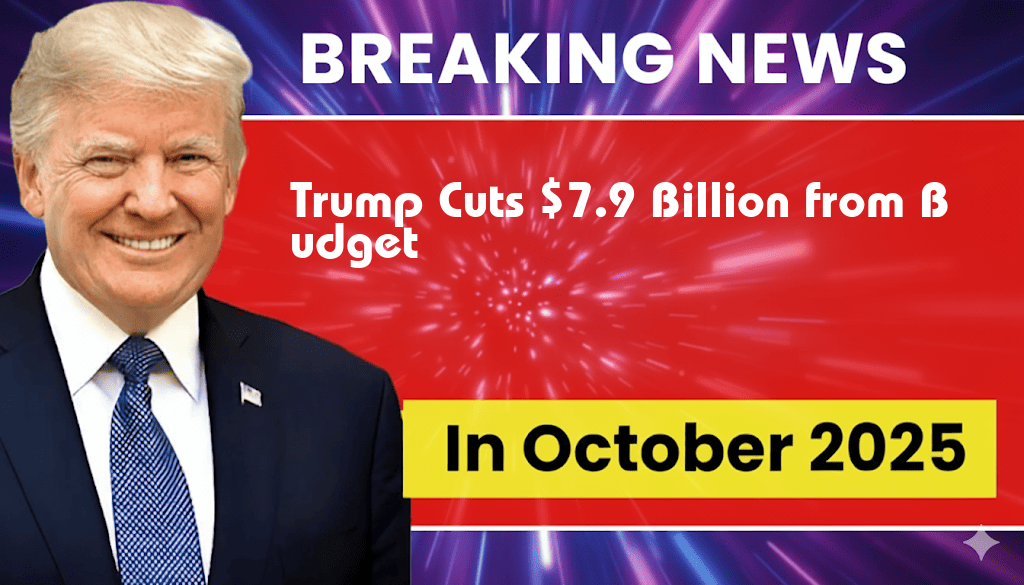In a significant move impacting the federal budget, former President Donald Trump has enacted the Rescissions Act, which aims to cut approximately $7.9 billion from various government programs. This legislation, which has sparked a mix of praise and criticism, is part of Trump’s ongoing effort to streamline government spending and reduce the national deficit. The act targets unspent funds allocated to numerous federal agencies and programs, emphasizing the administration’s commitment to fiscal responsibility. Proponents argue that the cuts will help eliminate wasteful spending, while opponents contend that the reductions could adversely affect crucial services and programs that rely on federal funding.
The Scope of Cuts Under the Rescissions Act
The Rescissions Act outlines specific areas where funds will be rescinded, impacting a range of sectors from education to healthcare. Here are some key areas affected by the cuts:
- Education: Significant reductions in funding for Title I programs aimed at helping low-income schools.
- Public Health: Cuts to programs that support mental health services and substance abuse prevention.
- Environmental Protection: Decreased funding for the Environmental Protection Agency (EPA) programs aimed at clean water initiatives.
- Housing: Reduction in funding for affordable housing projects administered by the Department of Housing and Urban Development (HUD).
Background and Legislative Process
The Rescissions Act follows a series of budgetary proposals put forth by the Trump administration, which has consistently prioritized reducing federal spending. The legislation was introduced in Congress amid broader discussions on budget reform, drawing attention from both sides of the political aisle. To better understand the process, it is essential to look at how this act came into being:
| Date | Event |
|---|---|
| January 2023 | Trump proposes budget cuts as part of his fiscal strategy. |
| February 2023 | Congress begins deliberations on the proposed cuts. |
| April 2023 | The Rescissions Act is formally introduced in Congress. |
| June 2023 | The act is passed by Congress and signed into law by Trump. |
Reactions to the Cuts
The response to the Rescissions Act has been polarized. Supporters, including some fiscal conservatives, commend the move as a necessary step to rein in government spending. “This act is a clear signal that we need to prioritize our nation’s financial health,” said one Republican congressional member. However, critics, including various advocacy groups and some Democratic lawmakers, have raised alarms about the potential fallout on vulnerable populations.
Concerns from Advocacy Groups
Numerous advocacy organizations have voiced concerns that the cuts will undermine critical support systems. For instance, the National Alliance on Mental Illness (NAMI) expressed dismay over the reductions to mental health funding, warning that these cuts could exacerbate the ongoing mental health crisis in the U.S.
Economic Implications
Economists are divided on the potential impacts of the Rescissions Act. Some argue that slashing funding could lead to a short-term fiscal gain but may result in long-term economic challenges by limiting essential services that support economic growth. In contrast, others believe that reducing government spending could foster a more favorable climate for private sector investment.
Conclusion
The implications of Trump’s Rescissions Act are still unfolding, and the debate over its effectiveness and necessity is likely to continue. As the administration moves forward with its budgetary agenda, stakeholders across various sectors will need to adapt to the new fiscal landscape. The coming months will reveal whether the act achieves its intended goals or if it becomes a contentious issue in the lead-up to the next election cycle.
For more information on federal budget proposals and policies, visit the Wikipedia page on the Federal Budget of the United States.
Frequently Asked Questions
What is the Rescissions Act proposed by Trump?
The Rescissions Act is a legislative proposal aimed at cutting $7.9 billion from the federal budget, targeting specific programs and spending that the administration deems unnecessary or inefficient.
How will the $7.9 billion cuts affect federal programs?
The cuts proposed in the Rescissions Act may impact various federal programs, potentially leading to reduced funding for social services, infrastructure projects, and other government initiatives that rely on federal support.
What are the arguments for and against the Rescissions Act?
Supporters of the Rescissions Act argue that it promotes fiscal responsibility and reduces government waste. In contrast, opponents claim that it could harm essential services and undermine economic growth.
When was the Rescissions Act introduced?
The Rescissions Act was introduced during Trump’s administration as part of a broader effort to reshape the federal budget and prioritize spending according to the administration’s policy goals.
What is the process for the Rescissions Act to become law?
For the Rescissions Act to become law, it must be approved by both the House of Representatives and the Senate, followed by the President’s signature, which requires navigating through potential political opposition and amendments.

Leave a Reply